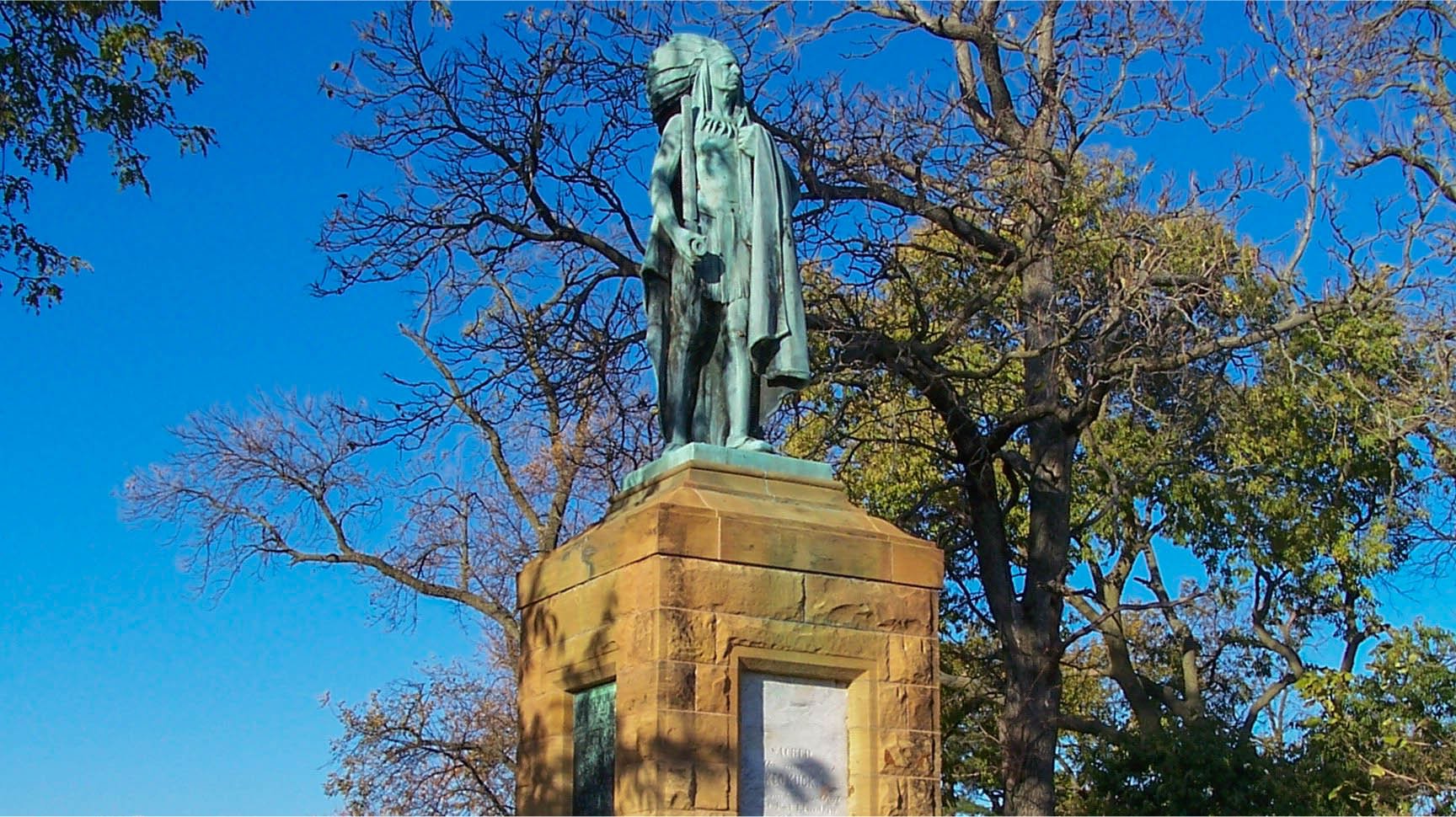Rand Park
1401 Stripe Street
Keokuk, Iowa
Chief Keokuk (Kiyo`kaga, 'one who moves about alert' ) was a member of the Sauk tribe in the Middle Mississippi River Valley and was noted for his policy of cooperation with the U.S. government during the Black Hawk War of 1832. Keokuk was young when he became a member of the Sauk council and rose to prominence command through ability and force of character and his lodge became a center for social and political affairs. Popular among the people of his tribe Keokuk used diplomacy to become a leading councilor in the Sauk assembly. Keokuk played a role in the Black Hawk War of 1832. This conflict between elements of the Sauk and Fox tribes and the Americans was the result of a dispute over an 1804 treaty between the Sauk and Fox and the United States. In Article 2 of this treaty the Sauk and Fox agreed to cede to the United States all of their lands east of the Mississippi and some of claims west of it in exchange for thousand dollars in goods from the United States every year. The feeling of many Sauk and Fox was that the treaty was signed by minor chiefs and had not been authorized by the Sauk and Fox tribal councils to negotiate a land cession. In 1832 Sauk and Fox Indians under the leadership of Black Hawk left the Iowa territory and returned to their homes across the Mississippi River in northern Illinois. In response to Black Hawk’s action the Americans organized a force that was ultimately composed of federal troops along with militia companies raised from the states of Illinois, Indiana, and Missouri and the territories. After a series of battles in northern Illinois and Wisconsin Black Hawk’s forces were finally defeated at the Battle of Bad Axe in present day Wisconsin.
During the conflict Keokuk remained loyal to the Americans who had made him their principal contact among the Sac and Fox people and rewarded him with gifts. Keokuk was also a leading figure for the native tribes during the negotiations to end the war which ceded six million acres of land in what is now the state of Iowa. Two areas were held back as special awards. One was these areas was a four hundred square mile strip surrounding the village of Keokuk was a reward for his neutrality during the conflict. The Sauk did not keep the land for long. In 1845 Keokuk and the Sauk were relocated to Kansas where Keokuk died of dysentery in 1848.
In 1883 the remains of Keokuk were removed from Kansas where they were reinterred in the newly created Rand Park in the city that bears Keokuk’s name. Rand Park is located on the bluff overlooking the Mississippi with a panoramic view of the river. The statue on the Chief Keokuk gravesite was dedicated in 1913, replacing the previous stone top of the monument. Legend has it that the idea for the statue came after some mischief makers stole a wooden cigar store Indian and placed it on the monument. The statue was created by noted Iowa sculptor Nellie Walker.
Visiting the Chief Keokuk Monument
Visiting Hours
Dawn to dusk everyday
There is no charge to visit the Chief Keokuk Monument.
Explore the community of Keokuk














